Golden Age Theater

Belladonna of Sadness
Directed by: Eiichi Yamamoto
Trailer: (NSFW)
Kanashimi no Belladonna (literally Belladonna of Sadness, also known as The Tragedy of Belladonna) is an avant-garde anime film made in 1973 and Inspired By Jules Michelet’s non-fiction book Satanism and Witchcraft (or La Sorciere). The film was directed by Osamu Tezuka’s disciple Eiichi Yamamoto and produced by Tezuka’s studio Mushi Productions.
Tezuka’s company was facing harsh economic realities and he decided to risk everything on a shift into feature film animation. 1001 Nights was successful enough to pay for the second film, Cleopatra/ Tezuka would leave the studio soon after its release though. With writing not just on the wall, but the wall crumbling before their eyes, the remaining staff set out to do something outrageous, artistic, and insane. This was the third film in what is known as the Animerama trilogy, and easily the most influential, Belladonna of Sadness.
If the trailer did not already alert you, the show is incredibly sexual and has multiple scenes of rape. NSFW.
Animation and Feminism Touchstone
The film featured a great production crew, if quite bare bones. Yamamoto had already proven his skill over a decade of work, and would go onto write Space Battleship Yamato. Sugii would go on to do another GAT feature, Night on the Galactic Railroad. The biggest name from the group however would be the amazing Osamu Dezaki.
Dezaki would launch from this film into one of the most praised career in anime, inspiring legions of followers and famous disciples. Kunihiku Ikuhara would cite Belladonna as his reason for becoming an animator, and his later work Revolutionary Girl Utena was a love letter continuation of the ideas in the film. Miyazaki’s first directorial work framed his lead woman in Lupin III after Belladonna. Takahata would revive the white-imaginative lack of drawing style in his latest works Yamada’s and Princess Kaguya. All three of these directors would also carry the torch of Feminism ideals and strong lead women throughout their careers. The list goes on and on of people inspired by the work, yet it was only in theaters for 10 days.
Belladonna is artistic wonder and inspiration with nothing held back. With twisting 70’s jazz-psych-pop music, the film goes on montage after montage of vibrant, surreal, and sexual explorations. Intercut are deeply sketched, imaginative white-out character scenes played over soul filled Japanese singing. The back and forth of these makes the hour and a half long film that covers a tremendous amount of story.
A scene everyone should see, the spread of the Black Death.
The Sexuality of Self-Determination
Belladonna of Sadness stayed quite true to the original novel it was based on. Dialog was mostly the same and followed a similar structure. The visuals on the other hand decide to work it. Blending a Snow White and Joan of Arc styled imagery throughout the film. With deep lines, faint details, and long pans over Japanese scroll type stories, the film is alive while also feeling like a picture book.
The opening is a water painting style, showing the brilliance and happiness of Jean and Jeanne. They get married and are overjoyed. The funky 70’s music and upward sliding shots give a lot to look at, but also orientate the audience to what will be a long ride of moving camera over long prints.
The custom in Europe at the time was to pay a levee to the Baron. The man is ghastly, and his lady shows clear malice early on. Her design is a reference to the Evil Queen, seen in Disney works and Snow Queen. This is later referenced again when Jeanne transforms from jackal to black caped woman, another classic imagery.
After seeing the Lady’s irritation, we find the source. Jeanne is beautiful, and the Baron demands 10x the amount that Jean could offer.The Baron then takes the opportunity to take his ‘King’s Price’ from Jeanne. The whole sequence is intense, but most stunning is the opening moment. I audibly yelled WTF when I first watched the film. Jeanne torn asunder, righteous joy torn apart and thrown to the wind by a cruel act.
In the aftermath, Jean tries to defend his position and lack of power to save her. This is perhaps the last straw, and Jeanne screams into the abyss, her hair changing color for the first time. We are treated to a fantastically long shot from position of her mirror, as she washes herself and tries to gain composure.
This all leads into her meeting a Demon in the shape of a penis. Which she stimulates in order for it to grow bigger and stronger. This would carry through the whole film, and mixes the idea of sexuality with an independent mind and confidence. As it grows, so too does her sense of individual right and self-determination. A wonderfully erotic journey that takes it to the absurd, but delivers it in such style.
Artistic Audience Integration
One of my favorite styles is when animators purposefully leave things for us to fill in. Character acting animation had not taken off in anime at the time, with Horus: Prince of the Sun introducing more social and moral topics only a few years before. Belladonna of Sadness chose to instead focus on the most important set piece of each scene. This creates for an orgasm scene that features only a few lines of a face in profile, or a look of fear outlined only by the eyes.
This was likely a budget issue that forced the lack of color and filament, but the artists used it to the maximum. They create impressively powerful statements, through finely detailed but minimalist pictures.

These moments work to both allow our minds to fill in the side information, and put emphasis on areas that are not truly there. Isao Takahata discussed this style a lot in interviews for the recent Princess Kaguya, which used a water color and fluid ‘artist rendering’ style of animation. Its a unique and fascinating way to tell a story. Belladonna also makes use of these whites, to make the happiness of naive marriage and the joy of independance more vibrant in contrast.
Brutality and Joan of Arc
The brutality of the film is intense. From giant red walls of ripped apart Jeanne, to a montage of rape and beastiality through a forest, to un-filtered hatred. Jeanne suffers pain and suffering that is hard to watch at times.

What holds my heart together is the transformation and evolution of our dear Jeanne. She transcends the logic of her world through the evolution of thought, sexuality, and scientific thought. The links towards the story of Joan are somewhat vague, but it comes home in the final scenes as Jeanne is burnt at the cross. The final shot of her burning reminded me of The Passion of Joan of Arc.
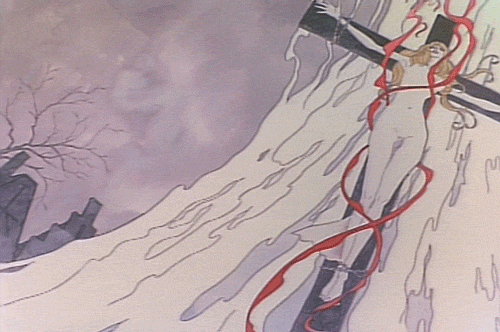
Final Thoughts
One of the early full bore explorations of the montage storytelling and a radical change in character design. A sexual and revolutionary work to match the culture clash of the late 60’s in Japan. Both colorful and simplistic.
Belladonna of Sadness is one of my favorites, if you couldn’t guess by now. Some might argue that the music and animation are dated, but watching it today still feels fresh and imaginative. I cannot recommend it enough.


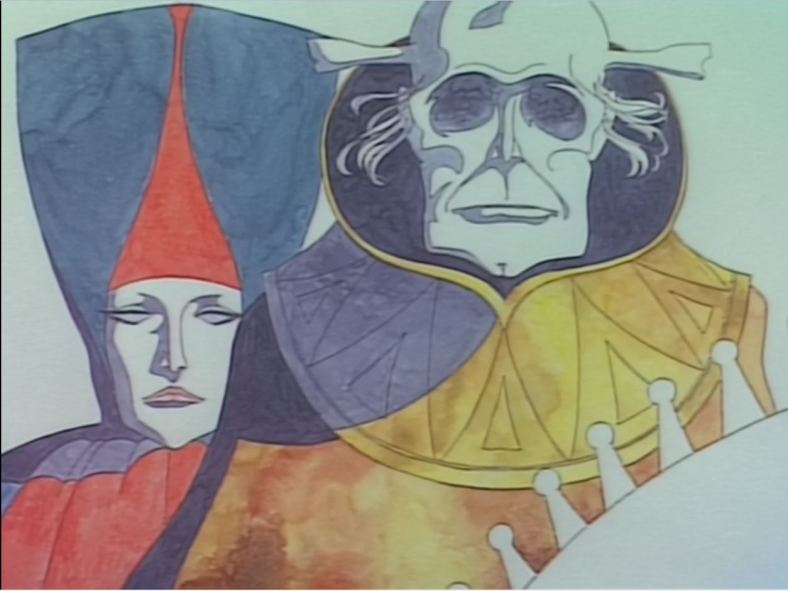



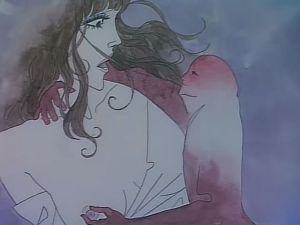


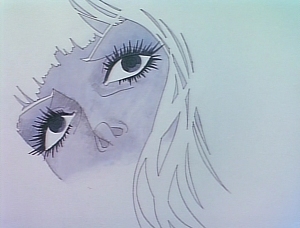


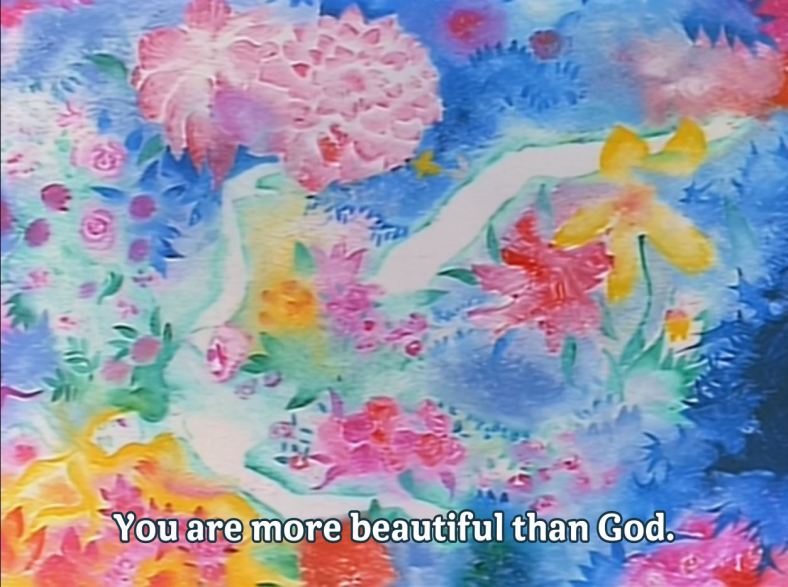



Wonderful write up! We just finished a 4K restoration from the original negative which will be screening at Fantastic Fest in Austin next month. Later this year it’ll have a wider theatrical release followed by VOD and blu-ray in 2016. I’ve created a tumblr blog showing off lots of great images and videos of our restoration. Help us spread the word! The more successful this release is the greater the chances will be that we’ll be able to release other titles like Bella! http://belladonnaofsadness4k.tumblr.com/
LikeLike